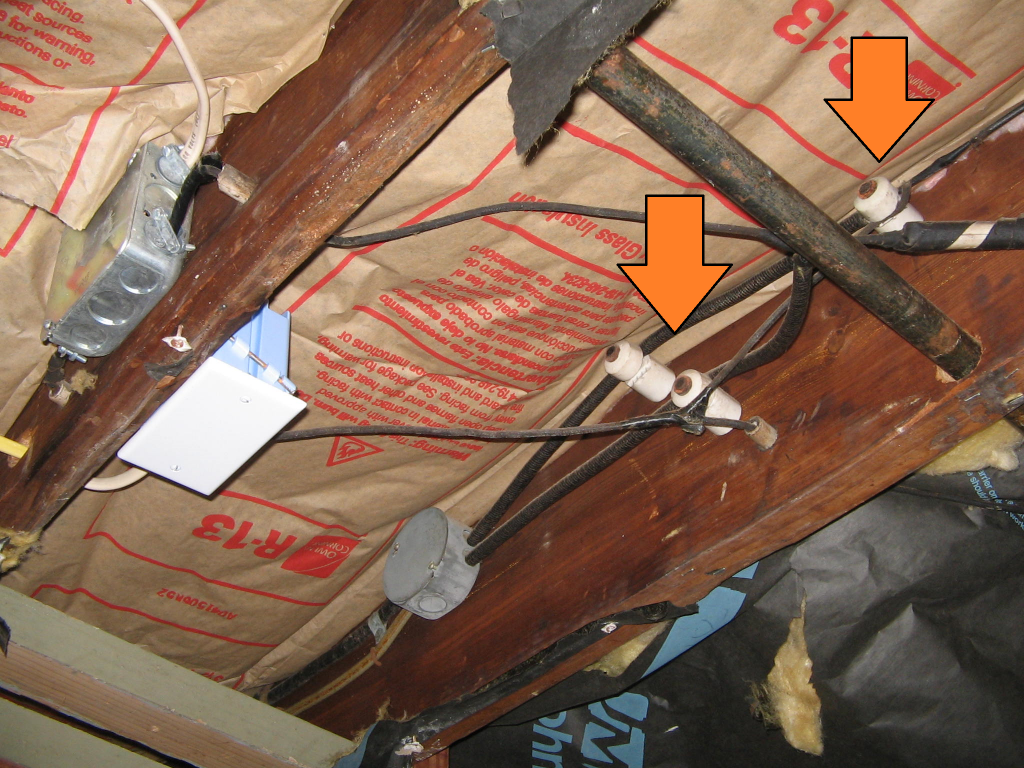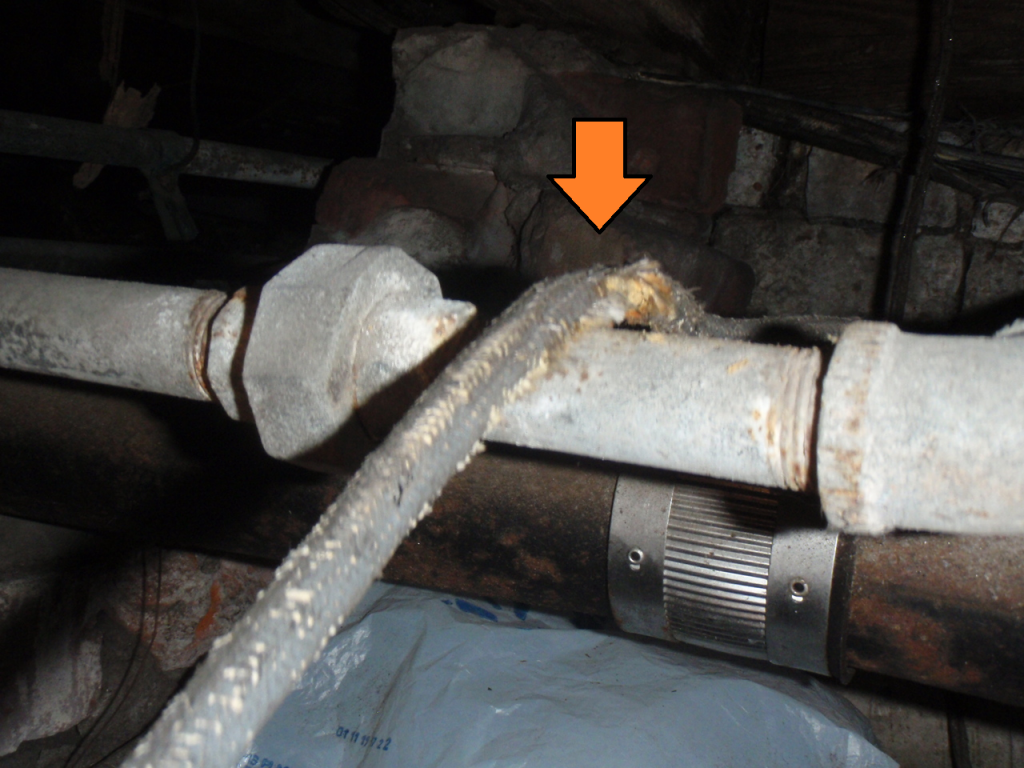Many older homes we inspect still have their original electrical wiring installed. The oldest type, knob and tube type wiring was installed in buildings from the late 1800’s (when we first started using electricity to power our homes) until the 1930’s and 40’s. The high cost of labor to install a knob and tube system, coupled with the decreasing cost of power cables eventually made using knob and tube wiring obsolete.

Cloth covered wiring was commonly used from the 1950’s through the 60’s and 70’s, as it was an inexpensive option for wiring buildings, but it’s now generally considered to be outdated and potentially hazardous. Instead of the plastic-style sheathing found in modern cables, the conductors were covered in a fabric/cloth type sheathing. This cloth was susceptible to the heat generated by the flow of electricity, and as a result could become dry and brittle, with resulting damage exposing the potentially live wires. Some of this cloth sheathing may also contain asbestos, creating another potential hazard with the system.

As there are some concerns with a wiring system of this age, this is the language that we typically use when reporting on these types of systems:
Knob and tube and/or cloth-covered wiring was visible during the inspection. The presence of this type of cable typically denotes an older wiring system and most electricians consider this type of cable to be a safety and fire hazard. Many insurance companies will ask if a property is equipped with an older style wiring system, and its presence may affect your insurance rates and the insurability of the property. Recommend verifying insurance qualifications prior to the end of the inspection period. We also recommend evaluation of this type of system by a qualified electrician prior to the end of the inspection period and repair or replace as needed.
